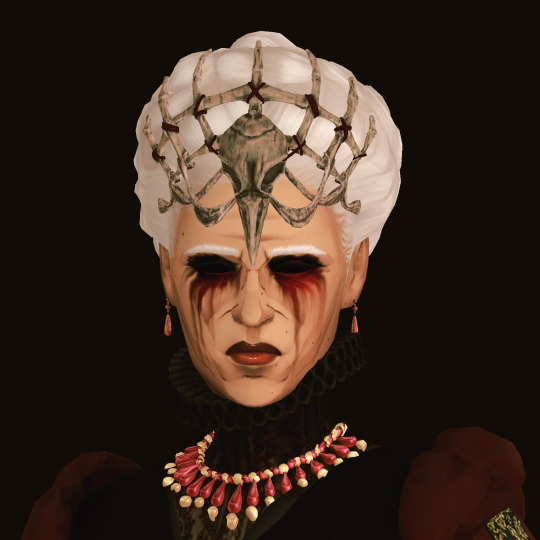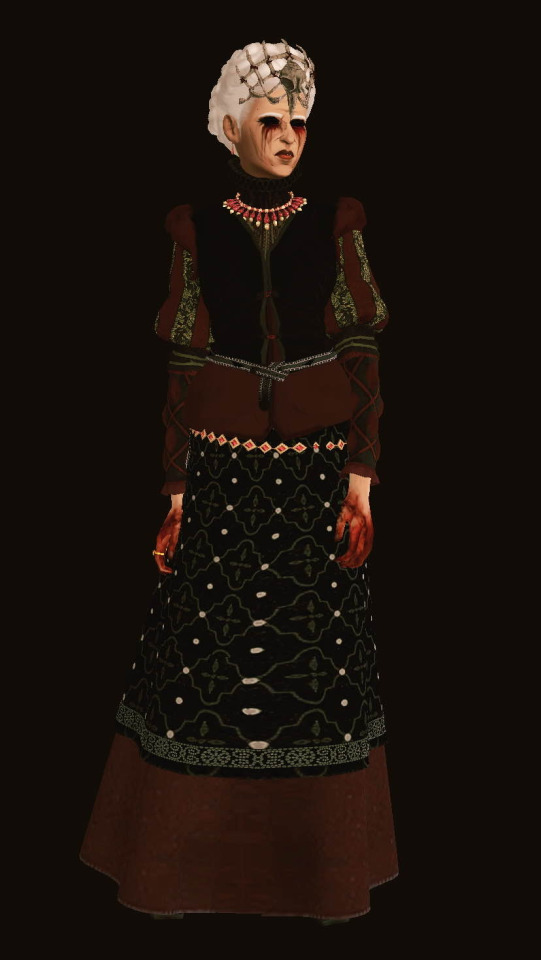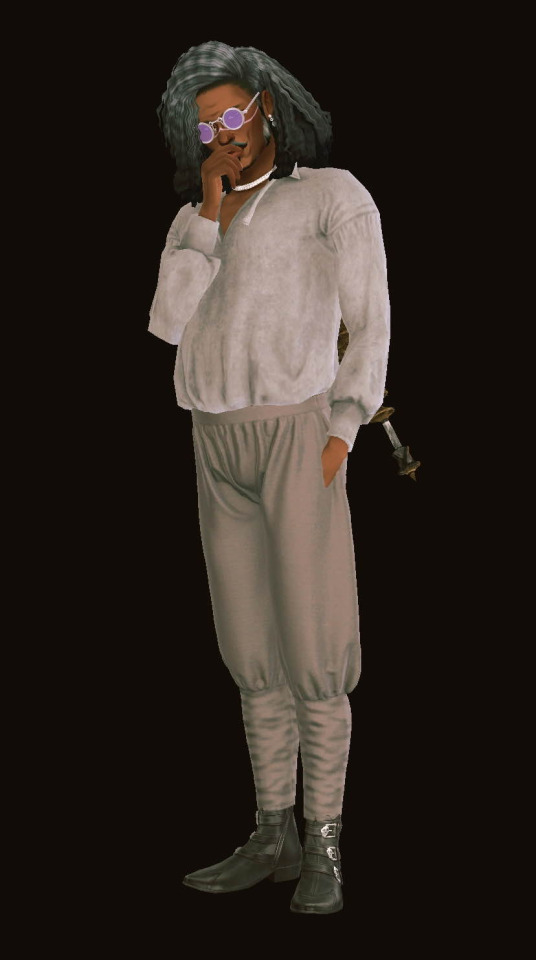#demiago
Explore tagged Tumblr posts
Text




Arman Pell-Ruadh and Eliyanora Ucello, the Sorcerer-Consuls of the Seberegn.
The Seberegn - a small city-state among the westernmost forests and cliffs of Albatwi - is home to the region's iconic magic-workers, the Half-Mages, or Demiago. Unlike many other magic-workers from across Albatwi, the Demiago believe that magic is best performed in pairs of two, and this half-and-half mentality governs much of the Seberegn's political and social structure, despite the state having a (slight) majority non-magical populace. Though the Seberegn was for centuries a Republican nation, with its paired consuls elected once every eight years, and its monarchy remaining as a purely cutural , Pell-Ruadh and Princess Eliyanora are a unique exception to past precedent.
After recent shifts in legislation, Pell-Ruadh and the Princess won a landslide vote as the first consulate pair to contain a member of the royal family - and the heir to the vestigial throne no less. Though a vocal minority protested the monumental election, it was not to disparage Princess Eliyanora's right to rule, but rather that of her mage-partner and husband, Arman Pell-Ruadh. Despite graduating from the Seberegn University of Sorcery, and his change in citizenship following his marriage to the Princess, many felt that Pell-Ruadh could not be considered a legitimate citizen of the Seberegn, and was thus not qualified to lead.
Now, however, as Pell-Ruadh and the Princess take the reigns for their second consecutive term, new whispers are beginning to spread throughout the winding streets of the Seberegn: Will this become a new era of villainous, undemocratic diarchy? Will their daughter, the Grey Princess, become consul? And, of more immediate concern, will the pair's rumored marital issues affect their ability to cast together? After all, the Sorcerer-Consuls are responsible not only for political leadership of the Seberegn, but also magical leadership, and thus the upkeep of much of the city's ensorcelled architecture. A split in the consulate could result in very literal physical destruction, particularly in the wealthier University districts of the Seberegn.
It's not clear now what will come of Pell-Ruadh and Princess Eliyanora's rule, but it is certain that whatever nation emerges on the other end will be greatly changed.
11 notes
·
View notes
Text




Residents of The Pot: The Healer & The Sorcerer
"Bloody" Marika Spanou is among the most well-known Bloodlinkers in all of southern Albatwi, and is certainly the most infamous across the whole of The Pot. Though many take the gory mode of her magic as a reflection of her character, an oath sworn during her education forbids Marika from using her power for harm, and she instead uses the enigmatic art of Bloodlinking - the symbolic attachment of souls, via the sharing of blood - to heal the various residents of The Pot, when they inevitably fall victim to saber, cannon, or barside brawls.
Though now one of The Pot's many sell-spells, "Grey" Carlo was once a student at the Seberegn University of Sorcery, expelled in his first year when the University discovered he was teaching simple spells to local non-mages, in exchange for coin. His expulsion turned quickly into banishment, and Carlo elected to travel to the southern sea for warmer climes (and a more welcoming society,) and he now has a slapdash shop on the edge of The Pot, where he sells fake "charms" for trade winds, luck with treasure, and love, and occasionally offers real magic to those discerning buyers who know the difference between graphite scribbles and proper Demiago magic.
Inspired by @puppycheesecake's RPG Archetype Challenge!
#ts4#sims 4#ts4 medieval#ts4 fantasy#my sims#bloody marika spanou#grey carlo#the seberegn#the pot#demiago#bloodlinking
5 notes
·
View notes
Text
Fashions of the Seberegn, pt 1 - the Demiago
The Demiago of the Seberegn make magic in two colors: black and white. This magic is used primarily to support industry and reinforce the city's gravity-defying architecture. Demiago's spells are always written, traditionally in either chalk or charcoal depending on the mage's color, and these elaborate sigils must be viewed regularly to maintain functional. Modern innovation has led to magically infused paints, allowing Demiago artist-pairs to paint elaborate portraits, murals, or signs to keep the city functional. As a scholastic city-state, showing off one's magical prowess - and one's color - is a requirement for all of the upper classes, and there is no better way than through one's clothing.


Government Officials
The Seberegn's impassible bureaucracy is well-known throughout the west, and its government is one of the city-state's largest employers, followed by the University. Government officials are required to follow a sumptuary law restricting them to only the color of their magic - black or white - alongside gold or silver accents, and the occasional colorful gem or jewel. Long skirts are a symbol of the erudite life of an official, regardless of gender, often leaving them somewhat restricted in their movement. Additionally, tall, complex braided updos are a ubiquitous style among all of the Demiago, reminiscent of the Seberegn's iconic high towers and floating buildings. Symmetry is maintained throughout most if not all outfits, and asymmetricality is closely connected with unkemptness - and thus relegated to the artists and the non-mages.


Nobility
Like the nation's government employees, the sorcerer-aristocrats of the Seberegn dress almost exclusively in the colors of their magic, though they are under no strict law that requires them to do so. Instead, the impetus comes from a simple desire to maintain and perform their social status. Symmetry is and will remain the de-facto rule, across all groups. Notable among nobility, however, is the split-skirt, with trousers underneath. This trend seeped into the upperclasses from the more artistic Demiago some time ago, and has remained for generations, thanks to its practicality, and its slightly flirtatious cut.


The Artists
Responsible for much of the city's elaborate sigil-work, as well as the non-magical artwork that adorns the walls of the high nobility, Demiago artists are admired and resented in equal measures. Their power over the city's physical construction is resented by those in governance, and their outlandish fashions are looked at with suspicion (and envy) by the nobility. As one of two "bridge classes" between the Demiago and the non-magical underclass of the small nation, the artists are often those responsible for introducing fashions of the underclass to the upperclasses. Currently, the object of their interest is color, which is almost entirely absent from all upperclass wardrobes and homes, but is prolific in the poorer parts of the city.


The Greymages
The half-magic of the Demiago is only (officially) taught at the Seberegn University of Sorcery, and students in the first year - the only one provided free of charge by the Seberegn government - are restricted only to grey magic; smaller, weaker spells which they can write and maintain on their own. Those who attend that first year, but can't afford to continue afterwards, are relegated to the role of Greymage, the closest thing the Seberegn has to a middle class. Required by sumptuary law to dress primarily in grey, and relegated largely to service and mechanical jobs, the Greymages sit at an awkward position between the under and upperclasses. Very few citizens of the Seberegn can even afford the year off work that the University requires, and the Greymage populace is largely made up of the few devoted hopefuls who worked their way through the first year, only to find they couldn't afford more. Unlike the other Demiago classes, many Greymages elect to ignore or reject the fashion trends of the aristocrats and artists, symptom of the deep resentment towards their "superiors."
6 notes
·
View notes
Text

The Continent of Albatwi
Drawn in Wonderdraft, and featuring the following locations:
REGIONS Fairyland The Grismarch Ustirt Plateau The Kathib Desert
LOCATIONS Muir The Seberegn Beyvan Kusti Territory Milu-Malam The Pot (coming soon hopefully!)
I will update as I add things :)
#ts4#sims 4#ts4 medieval#ts4 fantasy#my sims#the seberegn#grismarch#demiago#ustirt plateau#kusti nomads#beyvani people#the kathib#muir#northern fairies#sarkoli#malamai#the pot
1 note
·
View note